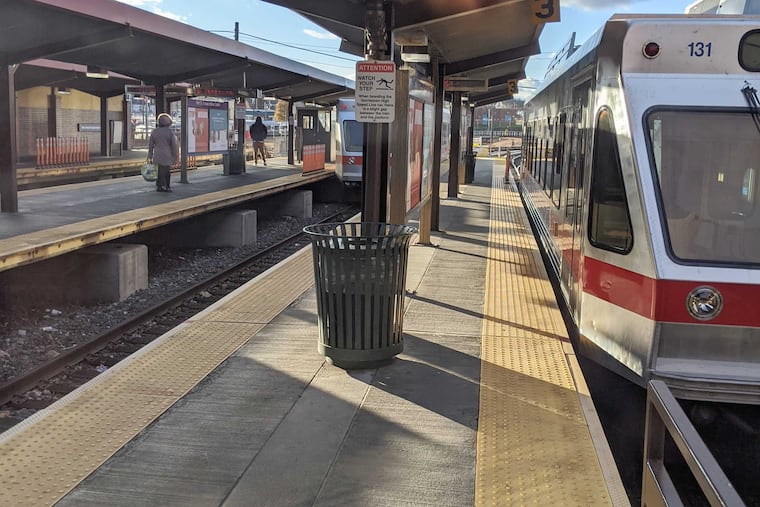King of Prussia rail extension is an exemplar of bad planning | Opinion
The project shows two pathologies of American transit: expansion for its own sake, and expensive concessions to placate a few change-averse residents.

The Southeastern Pennsylvania Transportation Authority is planning to spend $2 billion on an exemplar of bad transportation planning. SEPTA’s King of Prussia rail project will build a four-mile branch of the Norristown High Speed Line, a light rail line from West Philadelphia to the northwestern suburb of Norristown. The branch will serve a large mall and office park in King of Prussia, just southwest of Norristown.
The project shares many common flaws of American transit projects, such as the extreme cost — $500 million per mile would buy a subway in most European cities — and the protracted environmental review that has produced hundreds of pages of reports. Spurious environmental concerns, furthermore, seem to have motivated several bad and likely costly planning decisions, beginning with the route choice.
» READ MORE: As SEPTA recovers from COVID-19, prioritizing Philly projects is vital to city’s future | Editorial
A natural route choice is U.S. Route 202, a broad, straight road flanked by strip malls that runs from the King of Prussia Mall to an existing NHSL station. This route was considered as an alternative in the project’s nearly 700-page draft environmental impact statement (DEIS). But planners chose a route that runs along an undeveloped power line corridor and the Pennsylvania Turnpike freeway, serving nothing useful along the way. The DEIS admits that Route 202 “would provide the most access benefits” to “community facilities” such as schools, churches, and medical offices.
The DEIS mentions one valid point in favor of the turnpike route: it would be one or two minutes faster for most riders. But other factors are harder to accept. Businesses, for instance, complained that Route 202 construction would temporarily disrupt traffic — a genuine drawback, but small compared with the permanent cost of a bad route — and that a rail viaduct might have an “impact on business visibility.” The DEIS also mentions that many residents thought of Route 202 as the area’s “Main Street” and objected to anything that changed its appearance — currently dominated by charmless big-box retail.
The DEIS further mentions many dubious concerns about visual and noise impacts. King of Prussia rail will include an unnecessarily complicated overpass over the Pennsylvania Turnpike, for example, to avoid noise impacts on a few dozen houses abutting the turnpike — even though turnpike traffic already creates plenty of noise. It even brings up — though it ultimately dismisses — concerns that a light rail line along the turnpike would harm drivers’ views along the turnpike and the freeway’s purportedly historic architecture such as “travel lanes, some interchanges and toll plazas, some bridges, culverts and retaining walls; some service plazas; maintenance facilities; and state police stations.” (One must wonder why only some interchanges achieve historical significance.)
» READ MORE: Though expensive, the King of Prussia rail line is necessary | Opinion
There’s reason enough to doubt the need for a rail line at all. King of Prussia was designed for suburban drivers: it sits in the middle of a tangle of freeways, its buildings are separated by massive parking lots, and it is hard to navigate on foot — unpromising territory for public transit. The areas whose access to King of Prussia will be most improved by the new rail line, meanwhile, are the wealthy Main Line suburbs, with near-universal car ownership. Their residents are unlikely to switch to a slower train that dumps them across a massive parking lot from their destination.
It’s natural to consider cheaper options for better King of Prussia transit, such as bus service. KOP rail’s DEIS dismisses bus alternatives because most current buses to King of Prussia come from Philadelphia via the congested Schuylkill Expressway and have poor reliability. But this problem has an obvious solution: cut back the existing bus routes to shuttles from King of Prussia to nearby stops on the NHSL or SEPTA’s Regional Rail lines, so passengers can take more dependable trains to Philadelphia. Buses could be timed to make transfers convenient, and reforms such as fewer conductors on regional trains could allow more frequent service without more spending (regional trains in Europe run with no conductors at all).
» READ MORE: SEPTA intends to spend $40M in federal COVID-19 relief on proposed King of Prussia line
This alternative would free up money for many better uses: for instance, replacing outdated train cars on the busy Market-Frankford subway line, or building high-level rail platforms for faster boarding, better accessibility, and better punctuality on Regional Rail lines.
King of Prussia light rail is hardly alone in exemplifying two pathologies of American transit planning: expansion for its own sake (rather than building as a result of actual demand, which I lobby for in a new Manhattan Institute report), and making expensive concessions to placate a handful of change-averse residents. American cities are strewn with unused light rail lines in freeway margins or low-density industrial zones — where there may be no one to ride the train, planners think, but at least there’s no one to protest it.
Neither pathology can be cured without two key reforms to the transit planning process: First, streamline public comments and environmental reviews to reduce the influence of small but vociferous interest groups. Second, end federal subsidies of transit capital projects, such as the New Starts program that may provide half of King of Prussia rail’s budget, that enable transit agencies to spend billions of dollars they don’t have on new rail lines they don’t need.
Connor Harris is a fellow at the Manhattan Institute and author of the report “Transportation Solutions for ‘Boomtown’ Cities.”